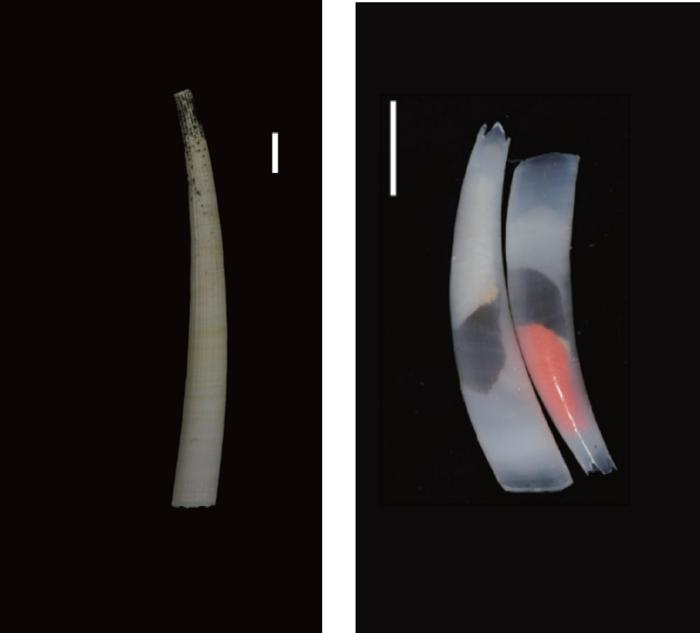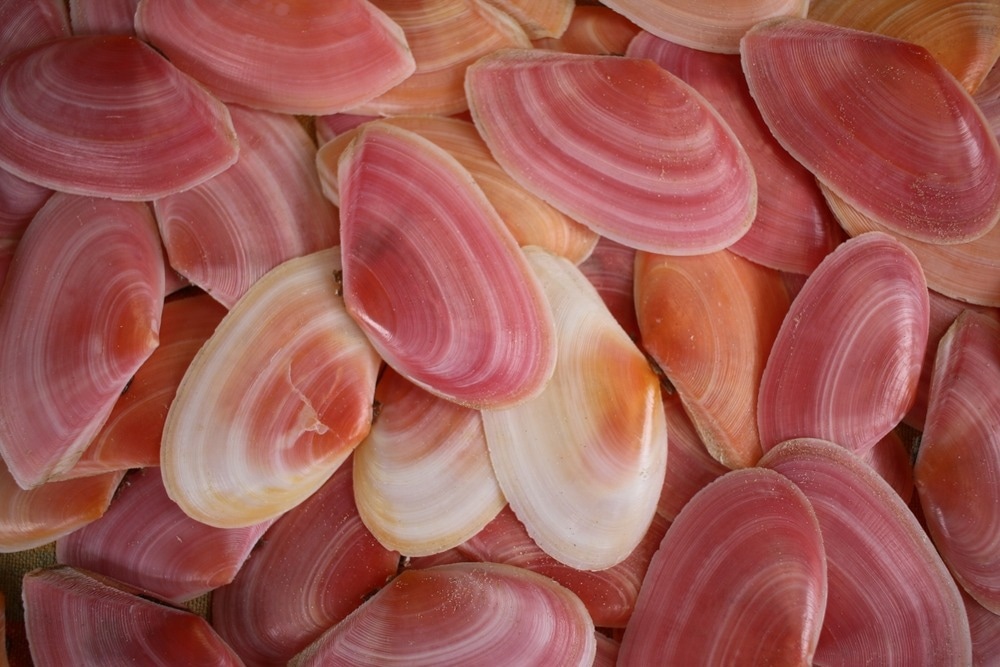Reviewed by Danielle Ellis, B.Sc.Sep 19 2023
Creating precise phylogenetic trees is crucial in the fields of evolutionary and comparative biology. However, reconstructing deep metazoan phylogenetic relationships faces significant challenges due to the sudden emergence of major animal phyla and various body plans during the Cambrian Explosion.
 The two lineages of tusk shells, Gadilida and Dentaliida. Image Credit: IOCAS and Nick Roberts
The two lineages of tusk shells, Gadilida and Dentaliida. Image Credit: IOCAS and Nick Roberts
This challenge is particularly pronounced when it comes to the second-largest phylum, Mollusca, as its major branches originated during the Cambrian period. The extensive fossil record, wide-ranging morphological differences among the eight living classes within Mollusca, and conflicting evidence from paleontology, morphology, and molecular data make it difficult to fully grasp the phylogenetic relationships within mollusks.
Investigators from China, the United States, and the United Kingdom recently sequenced the first genomes of Scaphopoda, or “tusk shells,” which are among the rarest and least-studied members of the Mollusca family and discovered extraordinary ancient incomplete lineage sorting (ILS) that took place during early molluscan cladogenesis.
These findings shed new light on early molluscan evolution and clarify why resolving molluscan class-level relationships has proven to be a difficult task for evolutionary biologists.

Image Credit: Martin Pecheur/Shutterstock.com
The research was published on September 18th, 2023, in the journal PNAS.
The researchers successfully settled the ongoing debate concerning where Scaphopoda fits into the evolutionary tree. Scaphopods possess a blend of morphological and developmental characteristics that bear resemblance to various other lineages.
For instance, they have tentacles similar to cephalopod arms, a distinctive shell formation process akin to bivalves, and a somewhat regressed head structure that appears to be an intermediary stage between bivalves (headless) and gastropods (with a well-developed head).
The distinctive features of Scaphopoda have led morphologists to propose various conflicting ideas about its place in the evolutionary tree of mollusks. Despite previous efforts in phylogenomic studies, the precise position of Scaphopoda within the molluscan tree has remained uncertain, making it a major question in the field.
However, in this recent study, the consideration of ancient incomplete lineage sorting (ILS) has provided a resolution to this debate. The research has unveiled that Scaphopoda is, in fact, the sister lineage of Bivalvia, a hypothesis originally proposed based on morphology half a century ago but not previously supported by molecular phylogenetic studies.
This discovery, along with meticulous molecular clock analysis, encourages a reevaluation of numerous significant but disputed Cambrian fossils that exhibit characteristics resembling both bivalves and scaphopods. For example, fossils like Anabarella, Watsonella, and Mellopegma, which date back to the Early Cambrian and have a laterally compressed structure, are now suggested to belong to the stem diasomes category.
Furthermore, this revelation offers valuable insights into the evolutionary development of the distinct body plans seen in scaphopods and bivalves.
Our work addresses the long-disputed phylogenetic placement of Scaphopoda and may revolutionize understanding of molluscan early evolution.”
Dr Hao Song, Study First Author, Institute of Oceanology, Chinese Academy of Sciences
The research highlights that the significance of ILS in the context of reconstructing radiations during the Cambrian period is not fully recognized. This underscores the need to investigate the influence of ancient ILS in understanding other challenging nodes within the broader field of deep metazoan phylogeny.